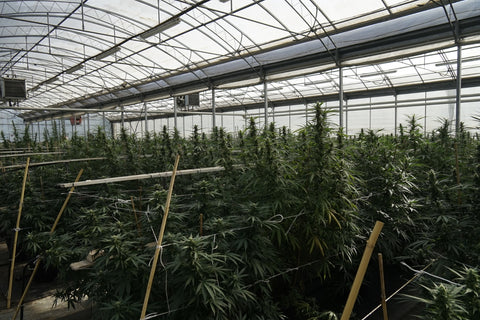Scientific support - Click here <---
…What is the Endocannabinoid System?
Discovered at the end of the 20th century while researchers were studying the effects of the cannabis plant on humans and animals, the Endocannabinoid System is a physiological system that is involved in the signaling process between cells and processes in the human body and consists of a sophisticated network of receptors cells which are proteins activated by natural chemical messages used by the body to increase the efficiency and speed of neural transmission (neuromodulators) called Cannabinoids.
What are Cannabinoids?
As we said, Cannabinoids are chemical messages that activate cell receptors, working like keys that open a lock. Both are incorporated into every cell membrane in the body, such as the brain, organs, connective tissues, glands and immune cells. In addition, they are also located at the intersection of the various systems of the body, allowing their coordination, as well as communication between different cells.
What types of Cannabinoids?
There are two types of Cannabinoids:
- Endogenous cannabinoids (Endocannabinoids): are produced by the body only when it signals that they are needed. They interact with neural receptors located in the brain that have basic functions, such as mood, appetite, pain and sleep. The best known are Anandamide – the well-known human THC – and 2AG. The first time we ingest Endocannabinoids is through breast milk, a possible reason why when babies are breastfed they become less likely to get sick.
- Exogenous cannabinoids (Exocannabinoids/Phytocannabinoids): although the body is capable of producing its own Cannabinoids, the Endocannabinoid system can be supplemented by Exocannabinoids that originate outside the human body, traditionally found in plants such as cannabis, echinacea, flaxseed and the cocoa. Examples of this cannabinoid are THC and CBD, which have both physical and psychological effects on the human body.
What are Cannabinoid Receptors?
Very briefly and abstractly, they are proteins that can be activated by Cannabinoids and of fundamental importance for Endocannabinoids to function in our metabolism. Researchers have identified two main types of cannabinoid receptors:
- CB1, mostly found in the nervous system, mainly in the brain and spinal cord, is the receptor stimulated by the Exocannabinoid THC - when activated, they produce psychological and emotional effects.
- CB2, activated by Exocannabinoid CBD and concentrated in immune cells and in the periphery of the nervous system – when activated, they have physiological effects, such as reducing inflammation.
In addition to these two receptors, Endocannabinoids can also couple to other receptors besides CB1 and CB2, namely TRPV1 (Transient Potential Vanilloid Type 1).
Why is the Endocannabinoid System important?
In existing studies, evidence has been documented that malfunctioning of the endocannabinoid system can promote the development and maintenance of psychiatric disorders such as depression, phobia and panic. This is why there is a lot of therapeutic potential for the human body, but little is known about this system, despite the fact that in the last 20 years 21,000 scientific articles have been written related to cannabis and Cannabinoids and their possible effects on other aspects. of human health. As already written on this blog, in the post “What is CBD?” , there is a condition that the studies carried out on this subject are of reduced scientific evidence, taking into account their method of realization.





Comments (0)
There are no comments for this article. Be the first one to leave a message!